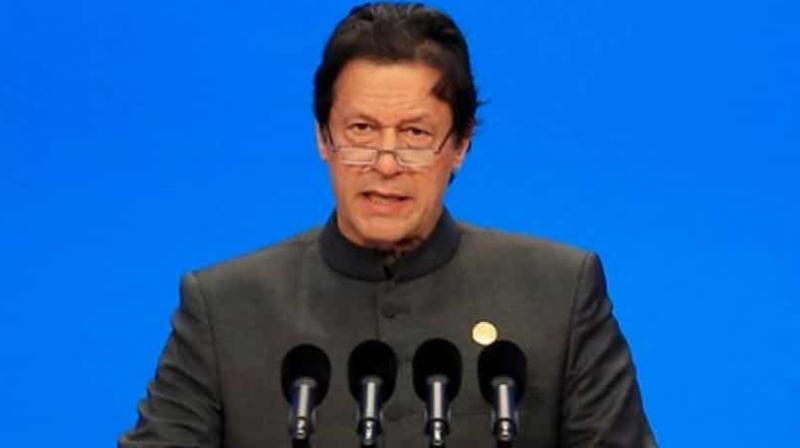BRI a chance to make US see Pak at par with India

China’s President Xi Jinping hosted the Second Belt and Road Forum in Beijing on April 26/27 — 125 countries and 40 international organisations have joined the Belt and Road Initiative. The BRI is an enormously ambitious project which envisages the linkage of the entire Eurasian mega-continent, and its near and far periphery in Southeast, South and West Asia, Africa, Europe and Latin America, through interconnected land and sea infrastructure, trade and investment.
Thirty-seven heads of state and government, scores of ministers and 5,000 delegates participated in the Forum, reflecting the growing endorsement of the BRI. This acceptance reflects a desire among developing countries to emulate the successful “model” of China’s economic development and a recognition that it can provide an invaluable path towards global economic growth, greater prosperity and peace and stability in developing countries.
Reportedly, 175 agreements have been signed under the rubric of the BRI. Projects amounting to $90 billion have been implemented. The planned outlay on infrastructure projects is $1 trillion. This figure is likely to increase as non-Chinese sources of official finance and private sector finance join in funding BRI projects. The scope of the concept now envisages incorporation of various forms of cooperation such as the digital economy, e-commerce and creation of a BR Studies Network linking think tanks.
The US has declared its opposition to the BRI and sponsored a political and media campaign to discourage developing countries and its allies from joining it. The US opposition has a strategic rationale. The initiative trumps the US aim of creating a ring of alliances around China’s periphery and maintaining its domination of the “India-Pacific”. The US has yet to acknowledge this is a losing battle.
Not one of America’s Asian allies has the stomach to confront China, their largest trading partner. India has declared it values economic cooperation with China. Japan and Australia have stopped joining the US Navy in “freedom of navigation” operations in the South China Sea. Miffed by US tariffs, Japan has joined the BRI as a “third party”. A Japan-China Fund has been set up to co-invest in BRI projects. Seventeen Central European countries have formed a group with China to promote economic cooperation including connectivity projects. Italy was the first G7 country to officially join the BRI. Even others, like the UK, France and Germany, who feel compelled by their alliance with the US to critique the BRI, are availing of every commercial opportunity emanating from the BRI.
America’s own companies are unwilling to heed the official boycott. Over 150,000 US companies are operating within the Chinese economy. Only a handful are likely to move out. China’s further ‘opening up’ is likely to further reinforce the interdependence of the world’s two largest economies.
Pakistan hosts BRI’s flagship component. Prime Minister Imran Khan was one of only seven leaders requested to address the summit. He called the BRI a “model of collaboration, partnership, connectivity and shared prosperity” and “a new and distinct phase — along the path of globalisation”. CPEC is now the principal vehicle for intensification of bilateral ties. Of the $1tr allocated by China to BRI projects, $72bn is envisaged for CPEC. Of the $90bn invested so far, around $27bn was in Pakistan.
China values its “strategic partnership”. Its cooperation is essential to ensure Pakistan’s ability to maintain credible deterrence against India and to stabilise Afghanistan after US withdrawal. If India is ever amenable to normalising ties with Pakistan, China’s, and perhaps Russia’s, intermediation may prove more advantageous than America’s.
The opportunity for Pakistan in China is more compelling. China is supporting Pakistan’s infrastructure development and industrialisation. It can be a growing market for Pakistan’s exports. The creation of an autonomous CPEC Authority would be useful to achieve the planned outcomes.
In an environment of great power rivalry, there must be strategic clarity in Islamabad. India’s enmity is a constant; after elections, it may be reduced to hostility or, at best, rivalry. The US South Asia strategy is predicated on India’s regional domination. There can be no wishful thinking that this can be changed by expressions of goodwill or clever diplomacy. The only way the US will treat Pakistan equitably is if it sees attractive economic opportunities in Pakistan. For this, Pakistan needs China’s cooperation.
Pakistan’s best choice now is to “tie itself to China with hoops of steel”, as proposed by the then foreign secretary S.K. Dehlavi in 1962. It would be tragic if we turn away from history’s beckoning finger once again.
By arrangement with Dawn

